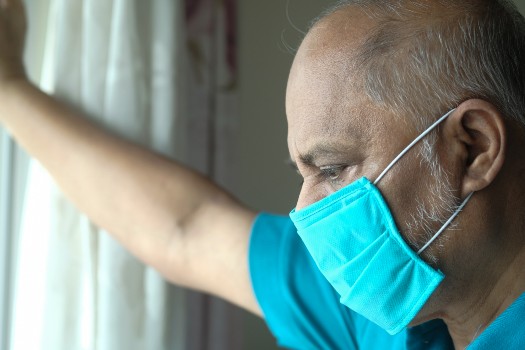The Government is working on a ‘better’ risk algorithm for patients shielding from coronavirus, it has said.
It is ‘unlikely’ that many children will be included on any revised list, meaning around 90,000 patients could be removed, the deputy chief medical officer for England said.
Dr Jenny Harries told GPs in last night’s live webinar that the Department of Health and Social Care (DHSC) is trying for a ‘much more nuanced approach’ with patients who are clinically at high-risk of Covid-19 ‘this time around’.
She said: ‘We are currently working to see if we can get a better risk algorithm which will hopefully be helpful to the patients themselves primarily in understanding their risk, but also will be helpful to you in having those conversations so you have the evidence at your fingertips going forward.’
The DHSC is also working with the Royal College of Paediatrics and Child Health on whether children should be included in any future shielding guidance, Dr Harries added.
She said: ‘It’s quite unlikely that there will be many children in any revised advice perhaps for a second wave, because children do very well.
‘We’ve currently got about 90,000 children on the shielding list and we think that is actually unnecessary and it’s probably stopping them from getting good education.’
In a letter sent to GPs and commissioners yesterday, chief nursing officer for England Ruth May and NHS England national medical director Professor Stephen Powis added that the Government will review its shielding guidance in the week commencing 15 June.
Shielding patients will receive information about the ‘next steps’ on shielding advice and the support available to them after this review, they added.
In the meantime, GPs should ‘continue to maintain’ the shielded patients list using ‘existing criteria and processes’, the letter said.
This includes identifying patients who are newly-diagnosed as clinically extremely vulnerable and removing those they believe have been added in error or no longer meet the criteria – in consultation with the patient and other clinicians ‘where appropriate’ – it added.
GPs should also contact any patients they have added or removed from the list but have not yet made contact with before the review on 15 June and make sure that they ‘[meet] the ongoing health needs of those who are shielding’, it said.
It added that for ‘most’ shielded patients the named lead clinician ‘will be someone from their GP practice’.
Meanwhile, Dr Harries added that around 30% of the original projected fatalities from coronavirus are part of the current shielded group.
She said: ‘The shielding programme was based on some modelling right at the start of the epidemic in the UK to prevent mortality.
‘It was quite a significant proportion, somewhere around 30% of projected fatalities were in this group.’
It comes as the Medical Defence Union (MDU) has expressed concern that GPs are facing an unexpectedly large number of complaints – including over shielding and PPE – despite the Covid-19 pandemic.
Last weekend, the 2.2 million patients who have been shielding from coronavirus since March were told they could go outside from Monday, in an ‘out of the blue’ announcement that was not communicated to GPs.
But health secretary Matt Hancock denied that the new shielding advice was ‘rushed’ in response to a question from Pulse at Monday’s live coronavirus briefing.
And NHS England announced last week that all shielded patients should have a named ‘lead co-ordinator’ in its latest standard operating procedure for general practice.














